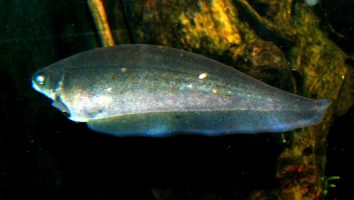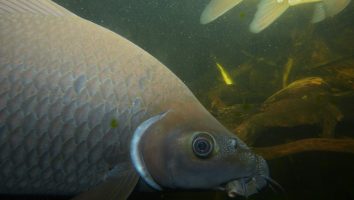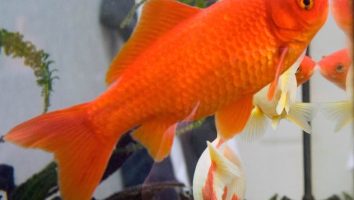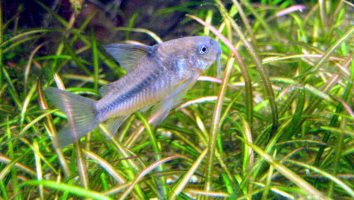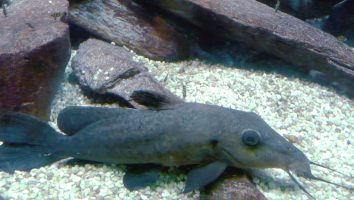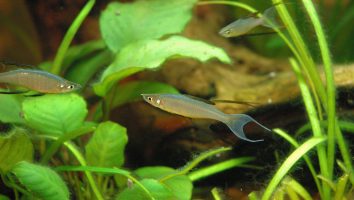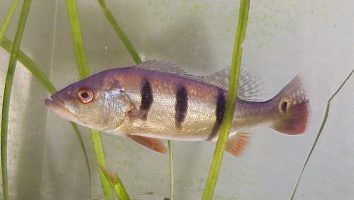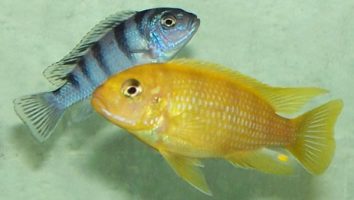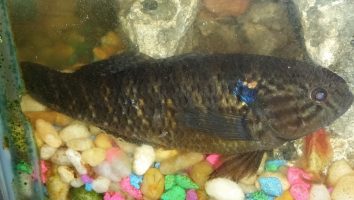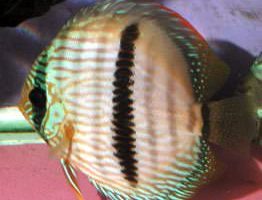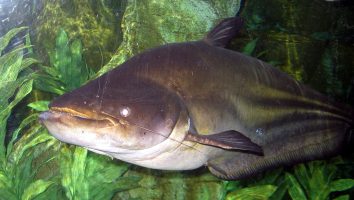The reedfish is an amazing and unique freshwater fish that is perfect for the beginner aquarium.
This fish is very easy to care for and is very tolerant of a wide range of water conditions.
The reedfish is also a very peaceful fish and will do well with a wide variety of tank mates.
In this guide, we will go over everything you need to know about reedfish care. We will cover topics such as tank size, diet, tank mates, and more.
Table of contents
Species overview
Reedfish (scientific name: Erpetoichthys calabaricus) are a type of fish that’s native to the Atlantic coast of Africa. They are most commonly found in the Niger River delta but have also been spotted in the Cuanza and Zambezi River basins.
Reedfish prefer murky and shallow waters that are packed full of vegetation. This is something that’s common to a lot of other fish species that are native to Africa.
In the wild, these fish are opportunistic predators. This means that they will eat just about anything they can get their mouths on. This includes other fish, invertebrates, and even smaller mammals if given the chance.
Reedfish are a popular choice for aquariums because of their unusual appearance. They are often compared to eels or snakes because of their long, slender bodies.
Appearance
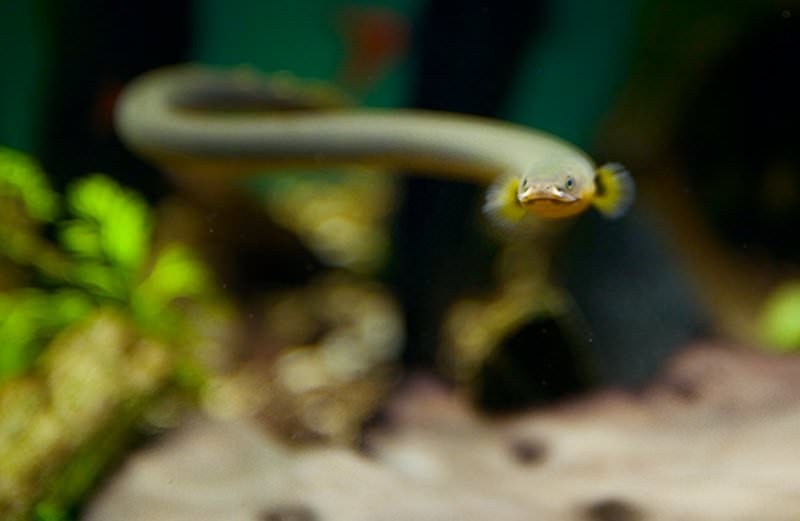
Reedfish are a very unique and interesting species. The first thing you’ll notice about them is their long, snake-like body. They have a very thin build that can grow up to 3 feet in length!
Their head is small in comparison to the rest of their body and it tapers down to a point. They have small eyes that are set far back on their head. Reedfish also have a very small mouth that’s located at the tip of their snout.
They are covered in small scales that have a very rough texture. These scales provide decent protection against predators.
Reedfish have a long, thin dorsal fin that runs the length of their body. They also have a small anal fin and a forked caudal fin.
Their coloration is a brown or tan on their back that fades to a white on their belly. They have a dark stripe that runs along their sides.
Reedfish are a very unique and interesting species that would make a great addition to any aquarium!
Lifespan
Reedfish have an average lifespan of 10 years, but can live up to 20 years with proper care.
Reedfish are a very hardy species, but as with all fish, their lifespan can be impacted by factors like water quality and diet.
If you provide them with a good environment and care for them properly, they can easily live for 10 years or more.
Size
Reedfish can grow to be up to 24 inches long, making them one of the larger aquarium fish on this list. However, they typically only grow to be about 12 to 16 inches long in captivity. This is still a good size fish, so you’ll need to provide them with a tank that can accommodate their adult size.
Tank
Tank Size
The recommended tank size for a Reedfish is at least 125 gallons. This fish can get quite large, up to three feet in length, so it’s important to provide them with enough room to grow.
A 125 gallon tank is the minimum size we recommend but if you have the space, a larger tank will be much appreciated by your fish.
Water Parameters
The reedfish is a tropical freshwater species that is found in slow-moving rivers and streams in Africa. In the wild, they often inhabit areas with a lot of vegetation.
Reedfish are a relatively new addition to the aquarium trade. They’re not commonly seen in stores, but they are becoming more popular among hobbyists.
If you’re interested in keeping reedfish, it’s important to provide them with water conditions that mimic their natural habitat.
Reedfish prefer water that is warm and slightly acidic. They also need plenty of hiding places and a soft substrate.
Here are a few basic water parameters to help create a healthy environment for your reedfish.
- Water temperature: 72 to 82 degrees Fahrenheit
- pH levels: 6.5 to 7.5
- Water hardness: 2 to 12 dGH
- Alkalinity Levels: 4-8 dKH
What To Put In Their Tank
When it comes to setting up the inside of an aquarium for reedfish, there are a few things you’ll need to take into consideration.
The first is that these fish like to have a lot of plants in their tank. This not only provides them with some shelter and hiding places, but it also helps to keep the water quality high.
We recommend including a variety of different plants in their habitat. This will not only make it more aesthetically pleasing but also give them more options when it comes to finding a place to hide.
The second thing to keep in mind is that reedfish like to have a lot of hiding places. This can be in the form of plants, rocks, or even driftwood.
anything that provides them with a place to feel safe is going to be a good addition to their tank.
The third thing to consider is the substrate. These fish like to have a soft substrate in their tank. This can be anything from sand to gravel. Just make sure that it’s not too sharp or abrasive.
Finally, we recommend including a filter in their habitat. Reedfish are known to be very messy eaters and produce a lot of waste. A filter will help to keep the water quality high and make things a lot easier for you in the long run.
Common Diseases
Reedfish are a species of freshwater fish that are native to Africa. They’re not a very common fish in the aquarium trade, but they’re starting to become more popular.
These fish are pretty hardy and don’t usually get sick. However, like all fish, they can still fall ill if the conditions in their tank are not ideal.
The most common disease that affects Reedfish is ich. This is a parasites that affects freshwater fish and can be quite serious if it’s not treated.
The most obvious symptom of ich is the presence of white spots on the body of the fish. If you notice this, it’s important to take action immediately.
There are a number of other potential diseases that could affect your Reedfish, but they’re not as common. Some of these include infections, parasites, and poor water conditions.
As always, the best way to prevent your fish from getting sick is to maintain a clean and stable tank. This will create an environment that is less conducive to disease and will help your fish stay healthy.
Behavior & Temperament
The reedfish is a peaceful and relatively shy creature. It’s not uncommon for this fish to spend most of its time hiding in the plants or other decorations of its aquarium.
Reedfish are nocturnal, so they’re more active at night. This is when they’ll come out to feed. During the day, they’ll often remain hidden and rest.
Although the reedfish is a shy creature, it’s not uncommon for it to become accustomed to its owner and allow itself to be hand-fed. This is a relatively slow process, so don’t expect it to happen overnight.
Reedfish are peaceful fish that do well in community tanks. They won’t bother other fish and can even coexist with fish that are known to be nippers.
Tank Mates
Reedfish are a unique species that can be a bit challenging to keep. They’re not super common in the trade, so your options for tank mates might be limited.
But don’t worry, we’ve got you covered.
Reedfish are a freshwater species that come from Africa. In the wild, they occupy a narrow range of habitats near fast-moving water.
This is important to keep in mind when choosing their tank mates.
First and foremost, the fish you add to the tank should be peaceful. Reedfish are not aggressive, but they are skittish.
The last thing you want is a tank mate that’s constantly chasing them around.
Secondly, the fish should be able to handle similar water conditions. Reedfish prefer water that’s on the warm side with plenty of dissolved oxygen.
With that in mind, here are some compatible species:
- Congo Tetra
- Zebra Danio
- White Cloud Mountain Minnow
- Ghost Shrimp
- Neon Tetra
- Cardinal Tetra
- Guppy
- Platy
Breeding
Reedfish breed in much the same way as other fish. They lay eggs which the male then fertilizes. The female will lay anywhere from 500 to 1,000 eggs at a time. The male will stay close by to protect them until they hatch.
It can take anywhere from 24 to 36 hours for the eggs to hatch. Once they do, the fry are on their own. They will hide among the plants in the tank and feed on microscopic organisms.
As they grow, you can start to feed them baby brine shrimp and other small foods.
Reedfish are not the easiest fish to breed in captivity. However, it can be done with some patience and a bit of luck.
Conclusion
The reedfish is an awesome fish that is often overlooked by aquarists. They’re a great addition to any tank, but especially one that contains other peaceful fish.
Their unique appearance is sure to turn some heads, and they’re relatively easy to care for as long as you’re aware of their specific needs.
We highly recommend the reedfish for anyone looking for a new and interesting addition to their tank!

